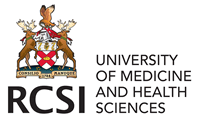About the Project
‘A post-antibiotic era—in which common infections and minor injuries can kill—far from being an apocalyptic fantasy, is instead a very real possibility for the 21st century ‘, reported the World Health Organisation (WHO) in 2015. The pipeline for the development of new antibiotics is now virtually empty, it will take at least 10 years to develop new antibacterial agents and the useful lifespan of an antibiotic (avoiding resistance) can typically be as short as 2 years.
The number of strategies currently identified to potentially delay the emergence of antibiotic resistance is particularly limited. Among them is the therapeutic use of natural molecules which have enabled, for millions of years, the first line of defence against infections in living organisms, the antimicrobial peptides. They have a number of unique features, particularly attractive against antibiotic resistance. Their clinical exploitation is however limited by a number of shortcomings, in particular their potential toxicity.
The host laboratory has developed a unique approach for the generation of PEG-based peptidomimetics of AMPs. Peptidomimetic is a generic term describing a molecule which displays the biological activity of a parent peptide, but which is structurally different. Peptidomimetic conversion is usually apply to address the clinical shortcomings of a parent peptide. Different peptidomimetic candidates of AMPs have been developed worldwide, in particular polymer-based mimetics, where a synthetic polymer backbone replace the peptide’s poly-amide backbone. These metabolically stable analogues can be administered at lower
doses, increasing thereby the therapeutic window. Some of these candidates have progressed to clinical trials where they have shown significant advantages over classical (approved) antibiotics. However, while polyethylene glycol (PEG) is described as ‘the gold standard biocompatible polymer for pharmaceutical and medical applications’, it has not been for the generation of polymer-based peptidomimetics to date.
The first PEG-based peptidomimetics were produced by the host lab; they mimicked a Cell Penetrating Peptide, a peptide sequence able to translocate across cell membrane and to act as a delivery agent for a large number of therapeutic molecules. The CPP peptidomimetic was shown to be more efficient than the parent peptide in the delivery of nucleic acids, while being non-toxic. The first peptidomimetics of ultrashort AMPs (tripeptides) were also successfully generated. Despite their small size, they displayed interesting antibacterial and antibiofilm activities, at least equivalent to those of the parent peptides. The approach used to generate these candidates can be adapted to produce larger candidates, approaching the size of the best AMPs know to date.
The aim of this project is to produce this second generation of AMP PEG-based peptidomimetics and to test and optimize their antimicrobial and antibiofilm activities against most bacteria in the WHO list of pathogens causing the most significant threat to human health (Nature, 2017, Vol. 543, p. 15).

 Continue with Facebook
Continue with Facebook

